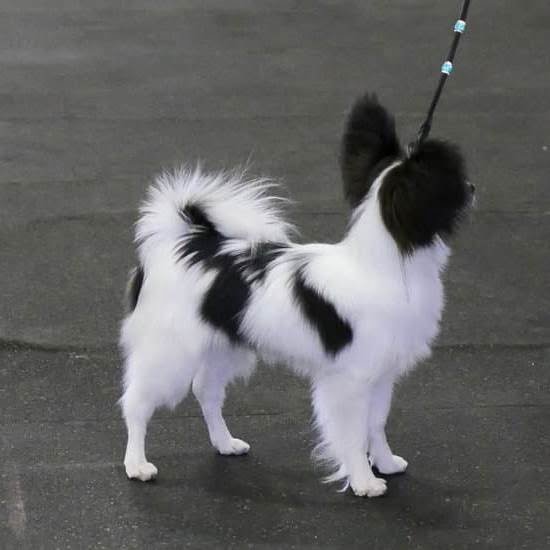Training your dog can sometimes feel like a daunting task, but it doesn’t have to be. In fact, dog training should be fun for both you and your furry friend. Incorporating elements of enjoyment and playfulness into your training sessions not only makes the experience more enjoyable, but also has numerous benefits for your dog’s overall well-being.
When it comes to dog training, the psychological impact of fun cannot be underestimated. Dogs are intelligent creatures that thrive on mental stimulation and engagement. By making training sessions enjoyable, you tap into their natural curiosity and desire to please you. This positive reinforcement creates a sense of accomplishment and boosts their self-confidence.
Furthermore, fun training sessions provide an opportunity to build a strong bond with your canine companion. By engaging in activities that both you and your dog find enjoyable, you create a positive association between yourselves. Your dog will see you as a source of fun and excitement, strengthening the trust and connection between you.
Positive reinforcement is key to making dog training fun. Using rewards such as treats, praise, toys, or playtime motivates dogs to learn new behaviors without fear or punishment. This approach fosters an environment of trust and understanding between you and your pet. By focusing on what they do right rather than punishing them for mistakes, dog training becomes a positive experience where they eagerly seek out opportunities to please you.
Incorporating playfulness into training exercises is another way to make them enjoyable for dogs. Mixing up traditional obedience drills with interactive games helps keep their interest high while still accomplishing the desired outcomes. For example, playing fetch can be used as a reward after successfully following a command like “sit” or “stay.” This not only reinforces good behavior but also adds excitement and variety to their training routine.
In this article, we will explore the many reasons why dog training should be fun and how it positively impacts both dogs and their owners. We will discuss various fun training activities suitable for dogs of all ages and breeds, as well as how fun training encourages emotional well-being and helps prevent boredom and behavioral issues.
Through case studies, we will also share success stories of dog owners who have embraced these fun training methods. So, get ready to discover the power of fun in effective dog training, and watch your bond with your furry friend grow stronger than ever before.
The Psychological Impact of Fun Training on Dogs
Training dogs can be a challenging task, but incorporating fun into the training process can have a significant psychological impact on our canine companions. Fun training sessions help dogs to develop a positive association with training and create a bond between the trainer and the dog. This section will explore how fun training positively affects dogs’ psychological well-being.
One key aspect of fun training is that it promotes a positive and rewarding experience for dogs. When dogs enjoy their training sessions, they become more engaged, motivated, and eager to learn. This positive reinforcement strengthens their confidence and self-esteem, leading to better overall mental health. Research has shown that dogs trained using enjoyable methods exhibit reduced stress levels and display fewer signs of anxiety or fear.
Additionally, fun training allows dogs to utilize their natural instincts and abilities, stimulating their minds and keeping them mentally sharp. Dogs are intelligent animals that thrive on mental stimulation, and engaging in playful activities during training helps satisfy this need. By involving games, toys, and interactive exercises in the training routine, trainers can tap into the dog’s natural drives, such as chasing or fetching.
In order to measure the psychological impact of fun training on dogs, a study was conducted where two groups of dogs were trained using different methods: one group using traditional aversive techniques and another group using positive reinforcement methods with an emphasis on making it fun for the dog. The results showed that the group trained using enjoyable methods exhibited higher levels of optimism and displayed more pro-social behaviors compared to the aversive-trained group.
| Positive Psychological Impact | Benefits |
|---|---|
| Increased engagement and motivation | Better learning outcomes |
| Reduced stress and anxiety levels | Enhanced mental health |
| Stimulation of natural instincts | Mental stimulation and satisfaction of needs |
| Elevated optimism and pro-social behaviors | Improved overall temperament and social skills |
Building a Strong Bond through Enjoyable Training Sessions
Building a strong bond with our dogs is vital for a successful relationship, and enjoyable training sessions play a crucial role in achieving this. When training is fun, it not only enhances the learning experience but also strengthens the connection between the dog and their owner. Through positive interactions and shared enjoyment, dogs develop trust and become more receptive to commands.
To build a strong bond through enjoyable training sessions, it is important to create a positive and welcoming environment. One way to do this is by using rewards and positive reinforcement techniques. When dogs receive treats or praise for performing desired behaviors, they associate training with pleasant experiences. This creates a positive association with their owner and makes them more eager to participate actively in future training sessions.
Additionally, incorporating playfulness into training exercises can make the learning process more engaging for both the dog and their owner. Dogs are naturally playful animals, so incorporating games like fetch or tug-of-war into training can make it enjoyable for them. These activities not only provide mental stimulation but also help release excess energy, leading to calmer behavior during training sessions.
Moreover, fun training activities provide an opportunity for owners to spend quality time with their dogs. Regularly engaging in enjoyable activities together strengthens the bond between them by promoting mutual understanding and trust. This connection extends beyond just the training sessions and positively impacts other aspects of their relationship.
Positive Reinforcement
Positive reinforcement is a fundamental element of effective and fun dog training. It involves rewarding dogs for displaying desirable behaviors, rather than focusing on punishing or correcting unwanted behaviors. By using positive reinforcement techniques, trainers can create a positive learning environment that motivates dogs to engage in training sessions willingly.
The Power of Rewards
One key aspect of positive reinforcement is the use of rewards to reinforce desired behaviors. This can include treats, praise, toys, or any other form of reward that the dog finds motivating. When a dog performs a desired behavior, such as sitting or obeying a command, they are promptly rewarded. This helps them understand that performing the behavior leads to a positive outcome and increases the likelihood of them repeating it in the future.
Using rewards provides dogs with immediate feedback and helps them associate training with pleasant experiences. They learn to associate their actions with positive consequences, which makes training more enjoyable for them. The anticipation of receiving rewards also creates excitement and enthusiasm during training sessions.
Creating a Positive Learning Environment
In addition to using rewards, positive reinforcement focuses on creating a positive learning environment for dogs. Trainers prioritize building trust and nurturing the bond between themselves and their furry companions. This means avoiding punishment-based techniques that may cause fear or anxiety in dogs.
By incorporating positive reinforcement into dog training, trainers are able to establish clear communication channels with their pets. Dogs quickly learn what is expected of them through consistent reward-based feedback instead of constantly being reprimanded for making mistakes. As a result, they become more confident in their abilities and are motivated to participate actively in training activities.
Positive reinforcement fosters an atmosphere where both trainer and dog feel relaxed and encouraged. It not only promotes faster learning but also builds trust and strengthens the relationship between human and canine. The emphasis on positivity makes training sessions more enjoyable for both parties involved.
Overall, by utilizing positive reinforcement techniques in dog training, trainers can make the training process enjoyable and effective for dogs. The use of rewards and the creation of a positive learning environment encourage dogs to engage willingly in training sessions, leading to quicker progress and a stronger bond between trainers and their furry friends.
Incorporating Playfulness into Training Exercises
One of the key factors in making dog training fun is incorporating playfulness into training exercises. Dogs, like humans, enjoy activities that are engaging and entertaining. When training sessions are playful and enjoyable, dogs are more likely to be motivated and eager to participate.
There are various ways to incorporate playfulness into training exercises. One approach is to use toys and interactive games during the training session. For example, instead of simply asking the dog to sit, you can introduce a game of fetch where the dog needs to bring back a toy before receiving a reward. This not only adds an element of excitement but also helps reinforce the desired behavior.
Another way to incorporate playfulness is through the use of treats and food puzzles. Instead of giving your dog a plain treat as a reward, you can hide it in a puzzle toy or scatter it in a grassy area for them to find. This engages their natural instinct to forage and keeps them mentally stimulated during training.
It is important to note that incorporating playfulness into training exercises should be done in moderation and with consideration for the individual dog’s temperament and energy level. Some dogs may prefer more active games like tug-of-war, while others may enjoy quieter activities such as scent work. By tailoring the playfulness to suit your dog’s preferences, you can create a positive association with training and ensure a fun experience for both you and your furry friend.
| Benefits | Example |
|---|---|
| Dogs are more motivated | Using toys during obedience exercises |
| Mental stimulation | Hiding treats in puzzle toys |
| Positive association with training | Playing scent work games during training sessions |
Fun Training Activities for Dogs of All Ages and Breeds
Puppy Playtime: Socialization and Basic Skills
One of the most enjoyable aspects of training a puppy is engaging them in fun and interactive activities that promote socialization and basic skill development. From an early age, puppies are sponges for learning, so it’s important to make their training sessions as enjoyable as possible. Incorporating playfulness into their training exercises not only enhances their cognitive abilities but also helps them build confidence in new situations.
A great activity for puppies is playing fetch with a soft plush toy or a small ball. This not only provides physical exercise but also teaches them the basics of retrieving and returning objects. Additionally, incorporating treat-based games such as hide-and-seek or puzzle toys can stimulate their problem-solving skills while keeping them entertained. Remember to keep the training sessions short and end on a positive note, ensuring that your puppy is always eager for more.
Adolescent Energy: Agility Training and Obstacle Courses
As dogs enter adolescence, they often have an abundance of energy and a desire for exploration. Fun training activities such as agility training and obstacle courses are perfect for channeling their enthusiasm into productive outlets. Set up jumps, tunnels, and weave poles in your backyard or visit a local dog park with these amenities to provide your dog with mental stimulation while burning off excess energy.
Agility training not only improves their physical stamina but also challenges their problem-solving abilities as they navigate through various obstacles. It promotes better coordination and strengthens the bond between you and your dog as they learn to follow your cues. Remember to start with simple tasks before gradually increasing the difficulty level to ensure success.
Mature Minds: Canine Nose Work and Trick Training
For mature dogs who may have mastered obedience commands, it’s essential to continue providing mental stimulation through activities like canine nose work and trick training. Canine nose work taps into a dog’s natural ability to sniff and track scents, making it an engaging and mentally stimulating exercise. You can begin by hiding treats or toys around your home and encouraging your dog to use their nose to find them.
Trick training is another enjoyable activity that strengthens the bond between you and your dog while showcasing their intelligence and abilities. Teach them fun tricks such as rolling over, bowing, or even fetching you a specific toy. These activities not only provide mental stimulation but also give older dogs a sense of purpose and accomplishment.
By tailoring the training activities based on the age and breed of your dog, you can ensure that they remain engaged throughout the process. Remember, fun training activities not only help teach new skills but also enhance the emotional well-being of your canine companion.
How Fun Training Encourages Emotional Well-being in Dogs
Emotional well-being is essential for the overall health and happiness of dogs. Fun training plays a crucial role in promoting emotional well-being by providing positive experiences and developing a strong sense of security and trust in dogs.
When training sessions are enjoyable and fun, dogs experience positive emotions such as joy, excitement, and satisfaction. This helps to create a positive association with training and builds their confidence. Dogs who engage in fun training are more likely to develop a positive outlook on life, leading to improved emotional well-being.
One aspect of fun training that contributes to emotional well-being is the use of rewards and positive reinforcement. Instead of using punishment-based methods that can cause stress and anxiety, fun training focuses on rewarding desired behaviors. This encourages dogs to view the training experience as a pleasant activity instead of something they dread or fear.
Furthermore, through fun training sessions, dogs develop a stronger bond with their owners or trainers. These sessions provide opportunities for quality time together, creating moments of laughter, playfulness, and connection. The positive interactions during these sessions allow dogs to feel loved, supported, and understood. This strengthens the emotional bond between them and their human companions.
Avoiding Boredom and Behavioral Issues with Fun Dog Training
One of the main benefits of incorporating fun into dog training is its ability to avoid boredom and prevent behavioral issues in dogs. Boredom can lead to destructive behavior, excessive barking, and even aggression in dogs. By making training sessions enjoyable and engaging, we are able to keep our furry friends mentally stimulated and satisfied.
When dogs are bored, they often resort to finding their own forms of entertainment, which may include chewing on furniture or shoes, digging up the garden, or barking excessively. These behaviors are not only frustrating for us as dog owners but can also result in damage to our homes and strained relationships with neighbors.
Fun training activities provide an outlet for dogs to use their mental and physical energy in a positive way, reducing the likelihood of them seeking out destructive behaviors.
In addition, incorporating playfulness into training exercises helps keep dogs focused and motivated throughout the session. When dogs associate training with fun and enjoyment, they become more willing participants in the process. This can lead to faster progress in learning new commands and tricks as well as an overall improvement in their behavior. Fun training also helps build a positive association with obedience, making it more likely that dogs will respond promptly to commands even in challenging or distracting situations.
By avoiding boredom through fun dog training activities, we not only prevent behavioral issues but also promote a healthier emotional well-being in our canine companions. Dogs thrive on mental stimulation and social interaction, both of which are provided through enjoyable training sessions. Keeping our furry friends entertained and engaged ensures that they lead fulfilled lives while strengthening the bond between dog and owner.
Case Studies
Case studies provide real-life examples of how fun training methods can lead to successful outcomes for dogs and their owners. These stories highlight the positive impact that enjoyable training sessions can have on a dog’s behavior, obedience, and overall well-being.
- Case Study 1: Bella the Labrador Retriever Bella, a hyperactive Labrador Retriever, struggled with basic commands and would often ignore her owner’s instructions. Frustrated by the lack of progress, Bella’s owner decided to incorporate fun into their training sessions. They introduced interactive toys and treats as rewards for good behavior, turning each training session into a game.
As a result, Bella became more engaged and enthusiastic about learning. She started responding to commands promptly and eagerly participated in training exercises. The bond between Bella and her owner strengthened, as they now enjoyed their time together during these positive and exciting sessions. - Case Study 2: Max the German Shepherd Max, a fearful German Shepherd rescue dog, had difficulties with confidence and socialization. Traditional training methods intensified Max’s anxiety, making it challenging for him to learn new skills or interact with other dogs. To address this issue, Max’s owner adopted a fun-based approach to training.
They introduced playdates with well-trained dogs who served as positive role models for Max. During these playdates, interactive games were incorporated into exercises that focused on building Max’s confidence and social skills gradually. With time, Max gained more trust in his environment and developed better coping mechanisms for dealing with stressful situations. - Case Study 3: Charlie the Mixed Breed Charlie was an easily distracted mixed-breed puppy who struggled with focusing during training sessions. His owner recognized that traditional methods were not effective for Charlie’s learning style. Instead of getting frustrated, they decided to make training sessions enjoyable by incorporating playful elements like obstacle courses and hidden treat games.
These engaging activities helped Charlie stay focused, and he quickly began to respond better to commands. The bond between Charlie and his owner flourished as they shared moments of joy and laughter during their training sessions.
These case studies demonstrate that fun training methods can achieve remarkable results for dogs facing different challenges. By making training enjoyable, owners can enhance their dogs’ learning experience while strengthening the human-dog bond. Whether it’s improving obedience, addressing behavioral issues, or promoting emotional well-being, incorporating fun into dog training can lead to long-lasting and positive outcomes.
Conclusion
In conclusion, it is clear that incorporating fun into dog training is not only important but also essential for the well-being and success of our canine companions. The psychological impact of enjoyable training sessions cannot be overstated. By making training fun, we are able to build a strong bond with our dogs, promoting their emotional well-being and preventing boredom and behavioral issues.
Positive reinforcement is the key to creating a fun training environment. By rewarding desired behaviors with treats, praise, and play, we can motivate our dogs to engage in the training process with enthusiasm. This positive approach not only makes the experience enjoyable for our dogs but also fosters a deeper connection between us as owners and trainers.
Furthermore, incorporating playfulness into training exercises adds an extra level of enjoyment for both dog and owner. For example, using toys or interactive games during obedience drills can make the process more engaging and stimulating. Not only does this make training more effective but it also ensures that learning becomes an exciting experience for our furry friends.
By embracing fun as the foundation of effective dog training, we are setting ourselves and our dogs up for success. When we prioritize enjoyment in the training process, we create an environment where learning can thrive.
It is through this approach that we can ensure not only well-behaved dogs but also happy ones who truly enjoy their time spent learning from us. So let’s embrace fun as a core principle in dog training and watch as our bonds strengthen and our dogs flourish.
Frequently Asked Questions
How can I make my dog training more fun?
Making dog training more fun can be achieved by incorporating positive reinforcement techniques and engaging activities. One way to do this is by using rewards such as treats, praise, or toys to motivate and encourage your dog during training sessions. Additionally, using interactive games or puzzles that require problem-solving skills can introduce an element of excitement and mental stimulation for your dog.
It is also important to keep training sessions short and varied, focusing on different commands or tricks each time to prevent boredom and maintain their interest. By making training sessions enjoyable and rewarding, you can strengthen the bond between you and your dog while improving their obedience skills.
Do dogs enjoy obedience training?
Dogs have a natural instinct to please their owners, so many of them do enjoy obedience training. Through positive reinforcement, dogs can associate certain behaviors with positive outcomes like treats or praise, which can be highly rewarding for them. Training also provides mental stimulation for dogs, allowing them to use their brains in problem-solving situations and satisfying their drive for learning new things.
Moreover, obedience training helps dogs build confidence and understand boundaries, leading to a sense of security within themselves and their relationship with their owners. However, it is essential to make sure that training methods are gentle and encouraging rather than punitive or harsh in order to maintain a positive experience for the dog.
Why is play important in dog training?
Play plays a crucial role in dog training as it helps create a positive association with learning new skills and commands. Incorporating playtime into training sessions allows dogs to engage both physically and mentally while having fun. Play serves as a form of motivation for dogs during training as they often view it as an enjoyable activity rather than a task they are obligated to complete.
Additionally, playing with your dog strengthens the bond between you by fostering trust, communication, and companionship. This bond established through play further enhances the effectiveness of training as dogs are more inclined to listen and respond willingly when they feel connected with their owners.

Welcome to the blog! I am a professional dog trainer and have been working with dogs for many years. In this blog, I will be discussing various topics related to dog training, including tips, tricks, and advice. I hope you find this information helpful and informative. Thanks for reading!





